Conversion tables for common bicycle tire sizes:
Nowadays, bike tires are typically marked according to ISO standard (ISO 5775), a system originally developed by ETRTO (European Tire and Rim Technical Organization), but older English and French tire size dimensions are still used as well. Use the data from the following tables to determine interchangeability and convert between ISO / ETRTO, English, and French sizes. Learn more about size markings here.
26" / 559 mm tires
Used on mountain bikes, cruisers.
| ISO / ETRTO (mm) | English size (inch) |
|---|---|
| 20-559 | 26 × 3⁄4 |
| 23-559 | 26 × 0.90 26 × 7⁄8 |
| 25-559 | 26 × 1.00 |
| 28-559 | 26 × 1.10 |
| 30-559 | 26 × 1.20 |
| 32-559 | 26 × 1.25 |
| 35-559 | 26 × 1.35 |
| 37-559 | 26 × 1.40 |
| 40-559 | 26 × 1.50 |
| 42-559 | 26 × 1.60 |
| 44-559 | 26 × 1.625 |
| 47-559 | 26 × 1.75 |
| 50-559 | 26 × 2.00 |
| 54-559 | 26 × 2.10 |
| 57-559 | 26 × 2.25 |
| 60-559 | 26 × 2.35 |
| 62-559 | 26 × 2.40 |
| 64-559 | 26 × 2.50 |
Popular 26" / 559 mm tire options on Amazon →
27.5" / 584 mm / 650B tires
Used on mountain bikes, these tires also go by the names: 27.5+, 650+, 6Fattie, or even just "Plus tires".
| ISO / ETRTO (mm) | English size (inch) | French size (mm) |
|---|---|---|
| 35-584 | 27.5 × 1.35 26 × 1 3⁄8 × 1 1⁄2 | 650B 650 × 35B |
| 37-584 | 27.5 × 1.40 26 × 1 1⁄2 × 1 3⁄8 | 650B 650 × 35B |
| 40-584 | 27.5 × 1.50 26 × 1 5⁄8 × 1 1⁄2 | 650B 650 × 38B |
| 44-584 | 27.5 × 1.65 26 × 1 1⁄2 × 1 5⁄8 26 × 1 5⁄8 × 1 1⁄2 26 × 1 3⁄4 × 1 1⁄2 | 650B 650 × 42B |
| 47-584 | 27.5 × 1.75 | 650B |
| 50-584 | 27.5 × 2.00 | 650B |
| 54-584 | 27.5 × 2.10 | 650B |
| 57-584 | 27.5 × 2.25 | 650B |
| 60-584 | 27.5 × 2.35 | 650B |
| 62-584 | 27.5 × 2.40 | 650B |
| 64-584 | 27.5 × 2.50 | 650B |
| 65-584 | 27.5 × 2.60 | 650B |
| 70-584 | 27.5 × 2.75 | 650B |
Popular 27.5" / 584 mm / 650B tire options on Amazon →
28" / 622 mm / 700C tires
Most road, hybrid, city and touring bikes.
| ISO / ETRTO (mm) | English size (inch) | French size (mm) |
|---|---|---|
| 18-622 | 28 × 3⁄4 | 700 × 18C |
| 19-622 | 700 × 19C | |
| 20-622 | 28 × 3⁄4 | 700 × 20C |
| 22-622 | 28 × 7⁄8 | 700 × 22C |
| 23-622 | 28 × 7⁄8 28 × 0.90 | 700 × 23C |
| 24-622 | 700 × 24C | |
| 25-622 | 28 × 1.0 | 700 × 25C |
| 26-622 | 700 × 26C | |
| 28-622 | 28 × 1 5⁄8 × 1 1⁄8 28 × 1 5⁄8 × 1 1⁄4 × 1 1⁄8 28 × 1.10 | 700 × 28C 700 C Carrera |
| 30-622 | 28 × 1.20 | 700 × 30C |
| 32-622 | 28 × 1 5⁄8 × 1 1⁄4 28 × 1 1⁄4 × 1 3⁄4 28 × 1.25 | 700 × 32C 700 × C Course |
| 33-622 | 28 × 1.30 | 700 × 33C |
| 35-622 | 28 × 1.35 | 700 × 35C |
| 37-622 | 28 × 1 5⁄8 × 1 3⁄8 28 × 1.40 | 700 × 35C |
| 40-622 | 28 × 1 5⁄8 × 1 1⁄2 28 × 1.50 | 700 × 38C |
| 42-622 | 28 × 1.6 | 700 × 40C |
| 44-622 | 28 × 1.625 | 700 × 42C |
| 47-622 | 28 × 1 3⁄4 28 × 1 5⁄8 × 1 3⁄4 28 × 1.75 | 700 × 45C |
Popular 28" / 622 mm / 700C tire options on Amazon →
29" tires
Found mostly on mountain bikes and used as a marketing term for wider 622 mm / 700C tires
| ISO / ETRTO (mm) | English size (inch) |
|---|---|
| 50-622 | 28 × 1.90 28 × 2.00 29 × 2.00 |
| 54-622 | 28 × 2.10 29 × 2.10 |
| 55-622 | 28 × 2.15 29 × 2.15 |
| 57-622 | 28 × 2.25 29 × 2.25 |
| 60-622 | 28 × 2.35 29 × 2.35 |
| 62-622 | 28 × 2.40 29 × 2.40 |
Popular 29" tire options on Amazon →
Less common bike tire sizes:
| ISO / ETRTO (mm) | English size (inch) | French size (mm) |
|---|---|---|
| 571 mm | 26 × 1 | 650 C |
| 583 mm | 700 D | |
| 590 mm | 26 × 1 3⁄8 | 650 A |
| 597 mm | 26 × 1 1⁄4 | |
| 630 mm | 27 × 1 1⁄4 27 × 1⁄8 | |
| 635 mm | 28 × 1 1⁄2 |
Bike tire sizing systems
In the beginning, there have been various measuring systems, with every country that manufactured bikes developing its own method of marking. The same size bike tire could be found with different numbers in different countries. As cycling has become more global, a standardized approach was needed.
While traditional sizing systems are based on the outside diameter of an inflated tire (measured in inches or millimeters), the ISO standard notation uses the diameter of the wheel bead seat in millimeters preceded by the inflated tire width in millimeters.
Inch based identifications indicate the width in a decimal (26 × 1.75) or as a fraction (26 × 1 3⁄4), and although these size identifications can be mathematically equal, they also can refer to different size tires, which are not interchangeable. ( 28 × 1 1⁄2 is not the same size as 28 × 1.50)

As pictured above, the numbers that indicate the size are found on the sidewall of the tire, and although they might be confusing at first sight, they are pretty straightforward. Generally, the size is indicated by two numbers that correspond approximately to the outside or inside diameter, and the width of the tire, but not always in that order.
A tire can also have one, two, or even three sets of sizing numbers. As long as one of these sets of numbers on a new tire matches the markings on your old one, the new tire should fit on your rim.
Here are the measuring methods of the three most common markings used today:

40-622
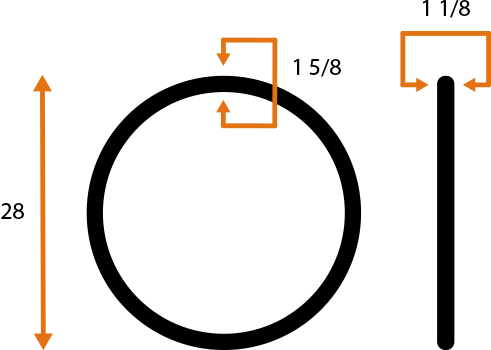
28 × 1 5⁄8 × 1 1⁄8
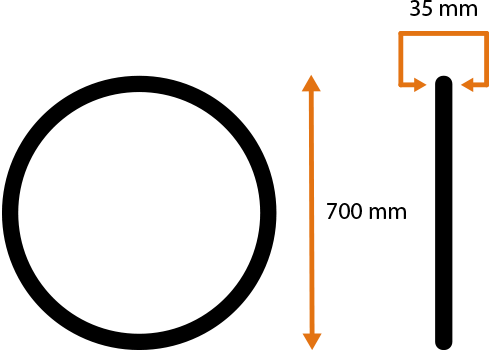
700 × 35C

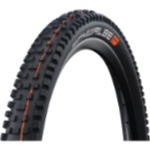 Schwalbe Nobby Nic
Schwalbe Nobby Nic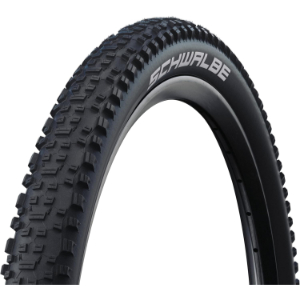 Schwalbe Marathon
Schwalbe Marathon WTB Trail Boss
WTB Trail Boss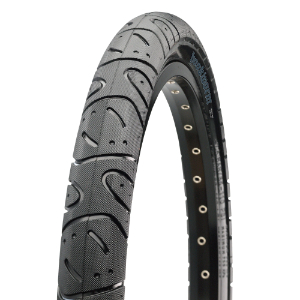 MAXXIS Hookworm
MAXXIS Hookworm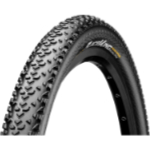 Continental Race King
Continental Race King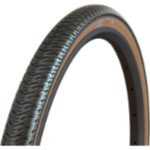 Maxxis DTH
Maxxis DTH